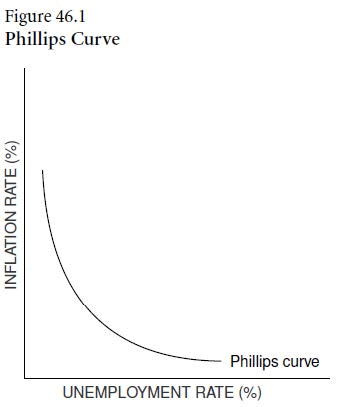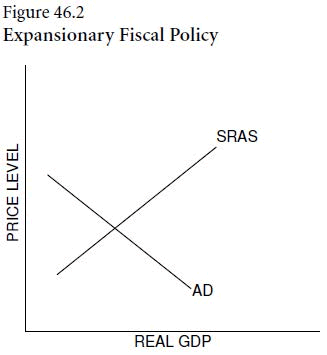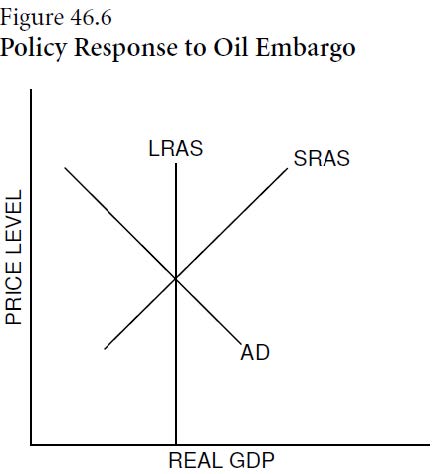Directions: | MS Word | PDF |
A.W. Phillips studied the historical relationship between the rate of change in wages and the unemployment rate in the United Kingdom. In 1958 he published his findings, showing an inverse relationship between these variables. In following studies, other economists found that the inverse relationship held when a change in the level of prices (inflation) was used in place of the rate of change in wages. In other words, when inflation increased, the unemployment rate decreased; and when inflation decreased, the unemployment rate increased. A graphic representation of this tradeoff became known as the Phillips curve.
In Figure 46.1, an example of the Phillips curve illustrates the trade-off between inflation and unemployment, or all of the different possible combinations of inflation and unemployment that exist along the curve.
The economy of the 1960s appeared to support Phillips' hypothesis. The economy was sluggish, inflation was low and the unemployment rate was high. Since the unemployment rate was higher than the natural rate of unemployment, the economy was not operating at its potential GDP. The Phillips curve suggested to some economists that if policy makers wished to lower unemployment, the trade-off would be higher inflation. |
 |
| Suppose government policy makers want to increase GDP because the economy is not operating at its potential. They can increase aggregate demand by increasing government spending, lowering taxes or a combination of both. Using an AD and SRAS model, draw a new AD curve that will represent the change caused by government policy designed to increase real GDP. |
Question 1
(A) What happens to the price level in the short run?
(B) What happens to real GDP in the short run?
(C) What happens to the rate of unemployment in the short run?
(D) The Federal Reserve can use monetary policy to try to stimulate the economy. It can encourage bank lending by ______________ bonds on the open market, _______________ the discount rate and/or ______________ the reserve requirements. |
 |
A Phillips curve would tell the same story. Inflation is low at high levels of unemployment, but inflation begins to increase as the unemployment rate decreases. The Phillips curve is useful for analyzing short-run movements of unemployment and inflation. See Figure 46.3.
In the late 1960s, some economists such as Milton Friedman and Edmund Phelps published papers that concluded there were two Phillips curves: one for the short run and one for the long run. The controversy continued as the economy of the 1970s experienced high inflation and high unemployment at the same time. The relationship appeared to be less stable than previously thought; the short-run Phillips curve had shifted to the right. |
 |
Question 2
Aggregate supply shocks resulting from the oil embargo imposed by Middle Eastern countries (OPEC) and worldwide crop failures helped to bring about higher inflation and higher unemployment rates. The economy, with rising prices and decreased output, was in a state of stagflation. Using an AD and SRAS model, draw a new SRAS curve that will represent the change caused by the OPEC oil embargo.
- In the short run, based on the new SRAS:
(i) What happens to the price level?
(ii) What happens to real GDP?
(iii) What happens to the rate of unemployment?
- As the economy moves to the long run:
(i) What happens to the wage rate?
(ii) What happens to the price level?
(iii) What happens to real GDP?
(iv) What happens to the rate of unemployment? |
 |
Question 3
Use the AD and SRAS model in Figure 46.6 to show the appropriate policy response to the oil-price increases in the following instances. Be sure to show on the graph the effects of the oil-price increase.
(A) If unemployment were the main concern of policy makers.
(B) If inflation were the main concern of policy makers.
(C) If inflation and unemployment were of equal concern. |
 |
Save your answers on your hard drive and then submit your work in the Lesson Folder. 
|



